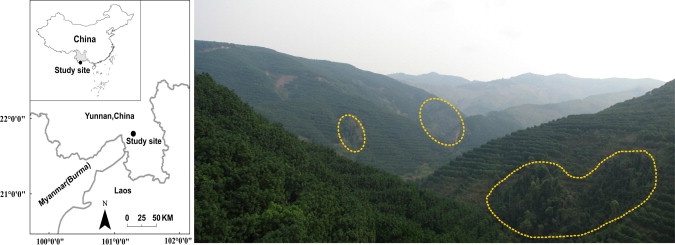Tropical forests in Xishuangbanna support high levels of avian diversity but these areas have been impacted by extensive deforestation. The tropical forest landscapes that once dominated the lowland regions of Xishuangbanna have now mostly been replaced by agricultural ecosystems. Empirical studies into the effects of land-use change on biodiversity are lacking from this region and birds are an ideal taxonomic group for such investigations.
Dr. Quan Ruichang and his students of Xishuangbanna Tropical Botanical Garden (XTBG) conducted bird surveys in remnant forest patches within rubber (Hevea brasiliensis) plantations with the aim of better understanding the prospects for forest bird conservation in human-modified environments. The study was conducted across 6000 ha (centered at 21°53′N,101° 16′E) within Xishuangbanna, Yunnan province, Southwest China.
They first examined bird diversity across the fragments, then determined the patch sizes which are able to sustain a year-round stable bird community by comparing overall species composition between the wet and dry season. Comparisons with bird species composition in local reserves were used to determine which species are more vulnerable to fragmentation.
Their study showed that even extremely small fragments can play an important role in the conservation of bird diversity. However, the patches (<1 ha, 1–3 ha, and 3–6 ha)included in the study were too small to support an annual stable population; especially for the frugivorous and large bird species which are the most vulnerable to fragmentation.
To establish a ‘biodiversity friendly rubber system’, the researchers suggested that future efforts across the Xishuangbanna region should focus on decreasing rubber plantation management activities (e.g., ceasing herbicide use) to facilitate the reestablishment of some woody and herbaceous plants in rubber plantations. They also suggested that larger forest patches be conserved to specifically meet the needs of larger and fragmentation-sensitive frugivores.
The study entitled “Bird conservation in extremely small tropical rainforest patches in southwest China” has been published in Biological Conservation, 158 (2013): 188-195.

Location of study site (left) and photographs of three forest fragments in a rubber plantation landscape (right). (Images by Quan Ruichang)

